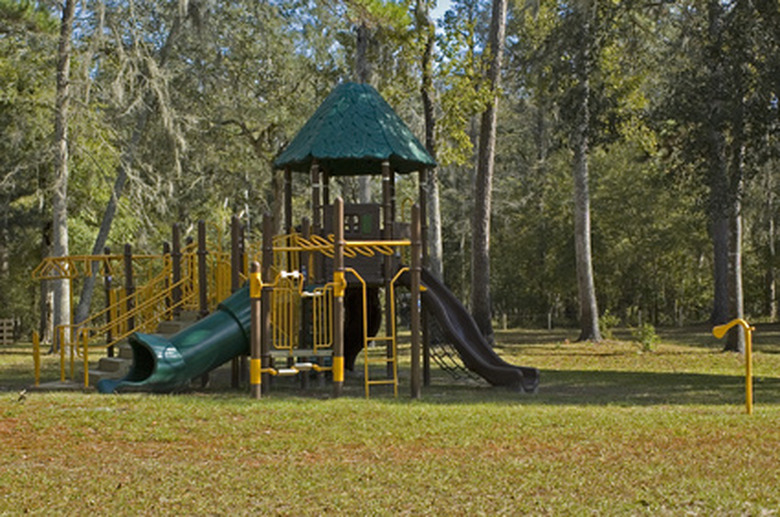How You Plant Ryegrass In Florida
Things Needed
- Mower
- Leaf rake
- Thatching blade (optional)
- Ryegrass seed, 10 lbs. per 1,000 square feet
- Mechanical seeder
- Garden hose with sprinkler
- Lawn fertilizer
Ryegrass is a cool weather annual grass. Plant annual ryegrass in warm weather grass lawns that turn brown in the fall season to add color. According to the University of Florida, perennial ryegrass is seldom planted in the Southern coastal areas because of poor adaptability. Annual ryegrass is typically overseeded on top of the existing warm weather grasses from the first of October to mid-November.
Step 1
Mow the existing lawn to a short height of approximately 1 inch for Bermuda and 2 inches for centipede and zoysia. Keep St. Augustine grass at its full height of 3 inches.
Step 2
Remove as much of the thatch and lawn debris from the turf as possible by raking vigorously. If the lawn has not been de-thatched in the past two to three years, install a thatching blade on the lawn mower. Run the mower with the thatching blade across the lawn. Remove all thatch debris with the leaf rake.
- Ryegrass is a cool weather annual grass.
- Mow the existing lawn to a short height of approximately 1 inch for Bermuda and 2 inches for centipede and zoysia.
Step 3
Overseed the prepared lawn with the annual ryegrass seed at a rate of 10 lbs. per 1,000 square feet. Pour the seed into the mechanical seeder. Set the seed application rate amount on the seeder mechanism. Various mechanical seeders will have a different method for setting the seed application rate–follow the manufacturer's directions.
Step 4
Push the mechanical seeder in one direction across the lawn, east to west. Refill the seeder with the annual ryegrass. Run the mechanical seeder in a perpendicular direction to the first application–north and south–for a good coverage.
- Overseed the prepared lawn with the annual ryegrass seed at a rate of 10 lbs.
- Run the mechanical seeder in a perpendicular direction to the first application–north and south–for a good coverage.
Step 5
Irrigate the ryegrass once or twice a day, lightly, with the garden hose and sprinkler. Continue the light watering until the seed geminates in seven to 10 days. Keep watering the new seedlings for the next two to three weeks.
Step 6
Mow the new grass to a final height of 2 to 2 1/2 inches. Ryegrass grows quickly and may need mowing on a weekly basis.
Step 7
Fertilize the ryegrass lawn after the second mowing. Follow label directions on the fertilizer packaging for frequency and application rates. Apply fertilizer every 60 days for a green ryegrass lawn.
- Irrigate the ryegrass once or twice a day, lightly, with the garden hose and sprinkler.
- Fertilize the ryegrass lawn after the second mowing.
Tip
Applying fertilizer too quickly to the new grass will burn the tender roots. Overwatering of the rye grass will cause the young roots to rot in the soil. Never allow the water to puddle on the surface.
